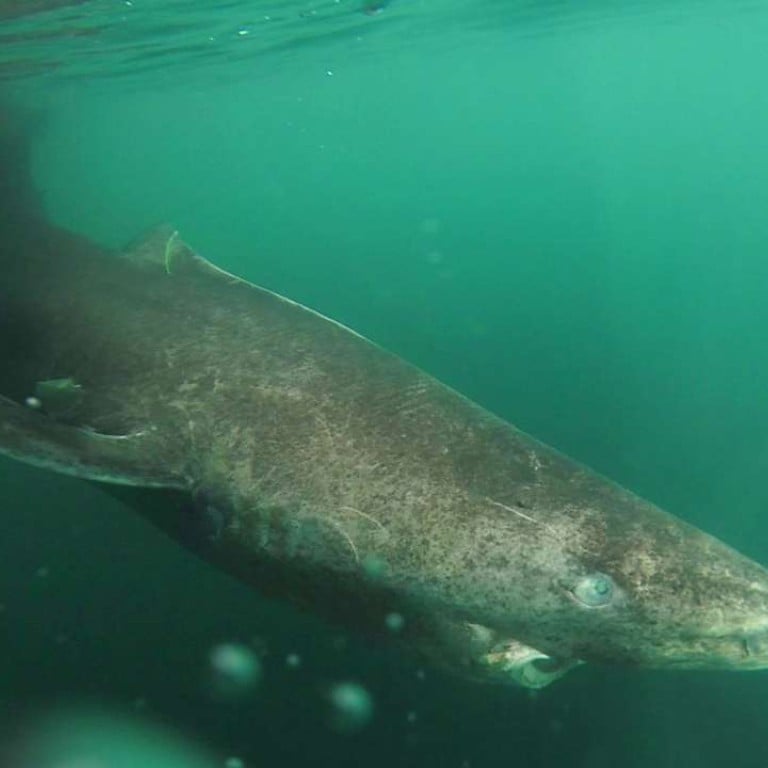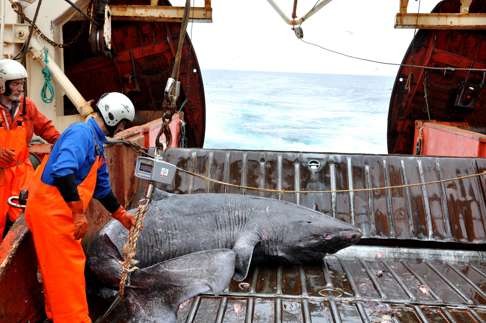
Greenland sharks live to be ridiculously old - and may not have sex until they're 150
The sharks are the Earth’s longest-lived vertebrates - or creatures with a spine - with a lifespan that can last as long as 400 years, international researchers say
Meet the oldest living vertebrate: a shark you’ve probably never heard of.
Greenlanders consider their local shark species - Somniosus microcephalus - to be something of a nuisance. The carnivorous creature, nearly the same size as the Great White when fully grown, has a habit of getting tangled up in long fishing lines designed to catch halibut. If caught and killed, the shark must be dried out before its meat can be eaten or given to sled dogs, as high quantities of toxins in the animal’s muscle cause something like drunkenness.
When he travelled to Greenland for research, Peter Bushnell of the University of Indiana South Bend would hear all of these grumblings. But he and his fellow scientists heard one slightly more intriguing rumour about the sharks over and over again: They lived to be incredibly old.

In a study published Thursday in Science, Bushnell and his colleagues report that the species actually has the longest known lifespan of any vertebrate on the planet. While their dating methods have a wide margin of error, they estimate that the sharks may live for four centuries or more. Even their most conservative estimates for lifespan - around 272 years - puts the species well ahead of the current record of the bowhead whale (Balaena mysticetus), which has an estimated longevity of 211 years. The Greenland shark may be surpassed only by a 507-year-old clam.
“Great whites are up in the order of 80 or 90 years,” Bushnell said. “Which is impressive, but . . . well, hey, this isn’t a contest.”
The secret to the Greenland shark’s longevity is pretty straightforward: These fish are very big and very cold.
“If you remember your basic high school chemistry, you know that temperature has a profound effect on chemical reactions,” Bushnell explained. The hotter things get, the more quickly reactions happen. Greenland sharks live in waters that hover just above freezing. Their tissues are cold, and so are the chemical reactions occurring therein - including all the metabolic processes that turn food into fuel and run the body. Big animals are also known to have slower metabolisms than small creatures: A mouse has a much higher metabolic rate than an elephant. If your metabolic rate is slowed, everything in your body is slowed - including the process of ageing.
The study relied on radiocarbon dating techniques, applied to the eye lenses of 28 females caught unintentionally by fishermen seeking other species.
Researchers can learn about the age of marine creatures by finding traces of atomic radiation in their tissues, resulting from atmospheric tests of thermonuclear weapons since the mid-1950s
They also take a very long time to reach sexual maturity - about 150 years, said the report.
For Burgess, that’s the real takeaway of the study.
“The business of whether it’s got another hundred years here or there is almost irrelevant,” he said. “What matters is that this animal is around for a very long time.”
Because of the cold waters of the deep ocean, many deep sea fishes and other animals have similarly long lifespans - and must reach a similarly ripe age before they can reproduce. The Greenland shark, despite having few local fans, isn’t in any immediate danger of extinction - no one goes fishing for them specifically. But to Burgess, the results of the study - while exciting - are a reminder of how fragile life is in the deep ocean.
“The bottom line is, of course, that this makes the animals extremely vulnerable,” Burgess said. “
These animals outlive humans: top 10 longest living critters
1. Hexactinellid sponge: One of these Antarctic sponges lived for an estimated 15,000 years.
2. Epibenthic sponge: Another Antarctic sponge that is generally estimated to live 1,550 years.
3. Ocean quahog: This clam, nicknamed “Ming,” had its rings measured and it had lived 507 years.
4. Greenland shark: A new study estimates the age of one of these sharks at 392, but it could have been somewhere between 512 and 272 years old when it died.
5. Bowhead whale: One male bowhead living in the Arctic waters was estimated to be 211 years old when it died.
6. Rougheye rockfish: These red fish of the North Pacific have lived to be 205 years old and show little effects of aging in life.
7. Red sea urchin: The spiny critters also don’t seem to age much and are estimated to live about 200 years.
8. Galapagos tortoise: These slow moving creatures seen by Charles Darwin have lived as long as 177 years.
9. Shortraker rockfish: These orange-pink fish have lived up to 157 years.
10. Aldabra tortoise and Lake sturgeon: A tortoise that died at a zoo was 152 years old; unconfirmed reports put some of these tortoises living up to 180 years. One lake sturgeon, a bottom-feeder fish, is reported to have lived to b

